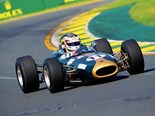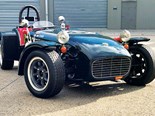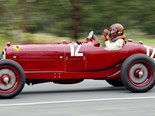AGP-winning Cooper Climax





























|

|

|

|

|

|

|

|

|

|

|

|

|

|
From the archives: Lex Davison made history when he won the 1961 Australian Grand Prix in a 'rented' race car. Almost 40 years on, his grandson Alex Davison found out what the fuss was all about
Originally published in Unique Cars #304, Oct/Nov 2009
AGP-winning Cooper Climax
Lex Davison in a Cooper! In 1961, it was as controversial a backflip as V8 Supercar team Triple 8 Racing announcing it will defect from Ford to Holden in 2010.
The three-times Australian Grand Prix winner was to seek his fourth title at South Australia’s new Mallala circuit at the wheel of one of the rear-engined racing cars he had once sarcastically called "anti-Climaxes".
You see, Alexander Nicholas ‘Lex’ Davison, then 38, was an old school, front-engine/rear-drive racer. He had won Australia’s premier race in 1954, aged 31, in an HWM-Jaguar and repeated the feat in 1957 and ’58 driving a classic Ferrari 635 fitted with a 3.0-litre engine from a Testa Rossa sports car.
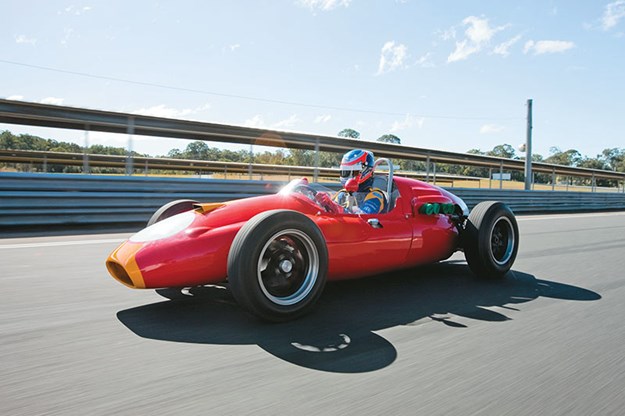
Cooper is tiny by modern standards, but there’s plenty of room for Alex in the airy cockpit. In its day the 2.2-litre four-cylinder car could knock off the standing quarter mile in under 13 seconds, which is right up there with a modern 3.8-litre Porsche 911 Carrera S
Then, in 1960, he came within a car’s length of winning the AGP again at Queensland’s Lowood circuit driving his new front-engined Aston Martin DBR4, which was the last factory-built, front-engined grand prix car. Thereafter, rear-engined cars would be the norm.
However, in 1961 he suddenly found himself car-less with Mallala looming.
| Read next: 1964 Repco-Brabham BT11A review

Borrowing the keys
Davison had spent some months overaseas in 1961 with his family racing Astons – a leased DB4 Zagato at Le Mans and a borrowed DB4GT and his own new Aston DBR5 single-seater in England – and before heading home he left the grand prix Aston with the factory for repairs and mechanical upgrades. But as the Mallala date drew nearer, it became clear that his race car was going to miss the boat to Australia, literally.
From this gloom, Davison’s arch rival and friend, Bib Stillwell, made a sporting offer. Having just taken delivery of a new ‘Low Line’ Cooper that was expected to dominate the race, Stillwell offered Davison his older 1959 2.2-litre Type 51 Cooper for Mallala.

This is the view that drivers of front-engined grand prix cars had to get used to; even Lex Davison admitted that rear-engined cars were the future after he won the ’61 AGP in this car
Under a quarter-page typed agreement dated October 5 – just four days before the race – the hire fee was set at £100 ($200) with the car to be returned "in a condition satisfactory to the owner". And if Davo wrote the car off, Stillwell was to be paid £3000 ($6000). Having crossed to the ‘dark side’, Davison approached his first Cooper communion with total professionalism, given that his AGP rivals included not only Stillwell, but also Stan Jones, David McKay and Bill Patterson – also in Coopers.
However, the new South Australian circuit – hastily created using the service roads of a former RAAF camp – was not nearly as well prepared and searing heat began to melt the newly-laid tar.
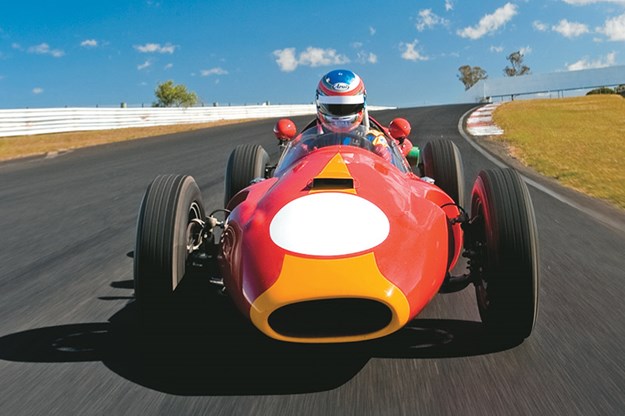
Classic cigar-shaped body, skinny wheels, no wings and a clearly visible driver. Grand prix cars of this era were gorgeous and Alex relished the chance to lap the Cooper
Last man standing
But fortune favours the brave and in the race the cards all fell Davison’s way. First Stillwell made a wrong tyre choice for the conditions, which ruined his Cooper’s handling; then McKay jumped the start from the second row and was given a one-minute penalty.
This left Patterson in a commanding lead, but on lap 31 the Victorian pitted with a misfire and Davison, in his first race in a Cooper and from a row-three start, followed McKay over the line to win his fourth Australian Grand Prix!
It was both a lucky and an historic victory. Lucky, because the Cooper had a gearbox leak then ran out of fuel just a few hundred metres after the finish and historic because, with the incorporation of the AGP into the new Tasman series in 1962, the country’s premier race became the last ‘amateur’ Australian Grand Prix.
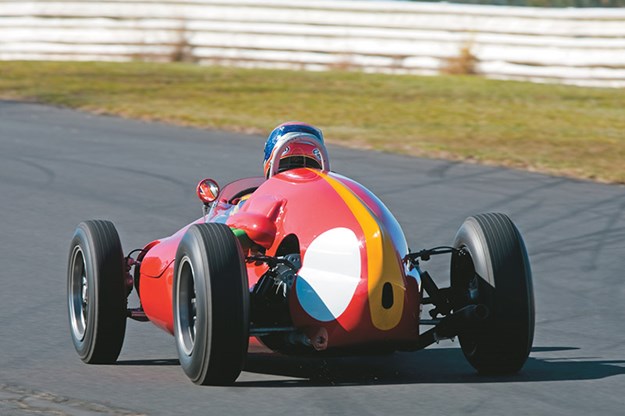
Davison was delighted and described his affair with the Cooper "like a man who, in middle age, takes a young mistress".
Within days of the victory he wrote to his contacts in England in search of his own rear-engined racing car and only raced the Aston a few times afterwards.
But in February 1965, Davison crashed his 2.5-litre Brabham Climax during practice at Melbourne’s Sandown circuit and was tragically killed, one week after his 42nd birthday.
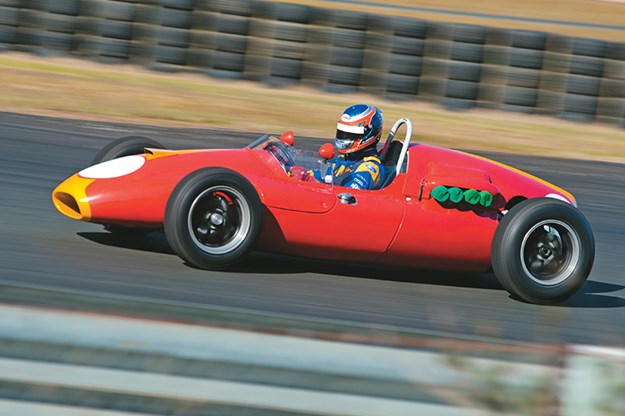
Generational change
Alexander Nicholas ‘Alex’ Davison, 29, followed familial destiny into motorsport from the opposite direction. Until he took to V8 Supercars, his experience and success had come exclusively in rear-engined racing and GT cars.
For him, the cars his grandfather once disparagingly referred to as "painted cocoa tins" were a ‘front-flip’ after a stellar career in karts, Formula Ford, Porsche Carrera Cup and Le Mans Series sports car racing. The engine room of his motor racing future now lies immediately ahead of him, rather than behind.
We’re at Lakeside Park – formerly Lakeside Raceway – the picturesque, circuit 30km north of Brisbane that opened early the same year that Lex Davison first raced the Cooper… and Alex is here to drive that Cooper.

He’s steered it before, during a demonstration at the Australian Grand Prix in Melbourne in 2007, but he’s keen to discover the magic that converted his grandfather to rear-engined cars on a circuit designed for them.
Rolled out of its period-style aluminium trailer, the Cooper – now in the care of Queensland engineer and historic racer Don Thallon – looks superb in the trademark Stillwell Racing red and yellow stripe it was repainted in after Thallon purchased it in 2003. By his estimate, he’s the car’s eighth custodian since Stillwell.
Since then, the car has appeared regularly at historic meetings and, notably, travelled to Monterey, California in 2006 for the ‘Tribute to Cooper’ festivities at Laguna Seca Raceway.
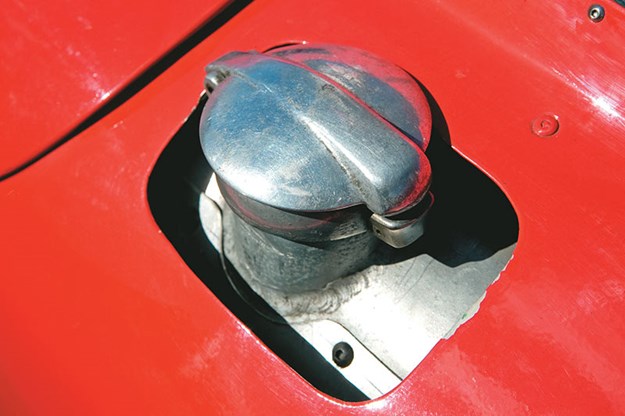
It’s an undeniably pretty car – simple, but beautifully proportioned and certainly tiny compared with the front-engined dinosaurs it vanquished in its era. The cockpit echoes the same minimalist theme: just a big, central rev counter running counter-clockwise to 8000rpm, flanked by four gauges for water and oil temperature, oil and fuel pressure – barely more than you would find in a Formula Ford not so long ago.
Perfect fit
There’s no question of Alex filling his grandad’s shoes. At 186cm tall, he’s the same height and build and like Lex at the same age, his career path is still climbing.

Sure, it’s a weighty family legacy being a Davison, but not one that Alex is uncomfortable shouldering. His father, Richard was an Australian Formula 2 champion; his uncle Jon was a Formula 5000 racer who for many years ran Sandown Raceway; his younger brother Will is going great guns with the Holden Racing Team and his cousin James is carving a name for himself in Indy Lights in the US. "The family name opens door but that’s all," Alex admits. "Once you are inside you are on your own."
After becoming Victorian Junior Kart Champion in 1995 and finishing third in the ’99 Australian Formula Ford Championship, he got a high-level introduction to Porsche and went on to win races in the German Carrera Cup and International Porsche Supercup, before returning home to unseat Jim Richards and take the 2004 Australian Carrera Cup.
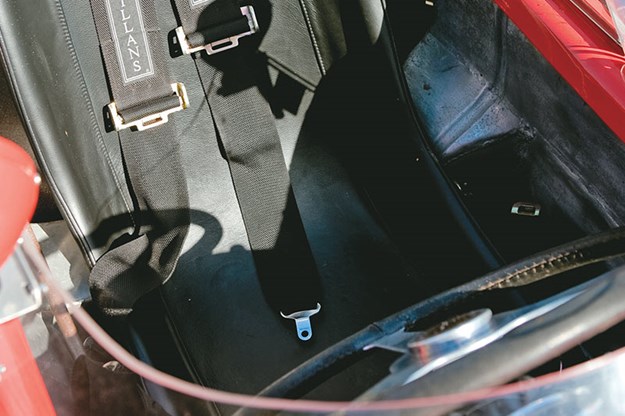
It was enough to open the door into V8 Supercars with Perkins Engineering the following year, but it ended badly, with Davison being sacked for lack of pace in what was clearly a bad car.
It was a low point, but after resurrecting his career in Australian Carrera Cup in 2006-7 and winning the Porsche Cup as the most successful international Porsche driver as the result of his performances in the 2008 Le Mans Series, he scored a three-year deal with Stone Brothers Racing in V8 Supercars.
At Darwin’s Hidden Valley this year, his persistence paid off with a fine second in the round and the Alex Davison of old is now clearly back.
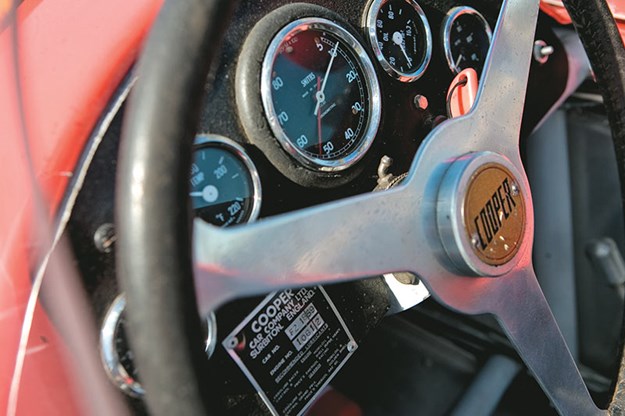
Big go-kart
At Lakeside, he’s immediately at home in the old Cooper, despite having had his first and only drive at the circuit back in his Formula Ford days, 11 years ago.
Despite Thallon’s friendly warning about "40-year-old magnesium wheels", he’s soon got the elderly Cooper whistling like a canary through Hungry Corner and screaming down the straight. The laps pass and he has to be waved in or else he would run out of fuel.
"It feels like a big go-kart," he gushes. "It’s like coming home to have an engine behind me again, and it’s been a while since I’ve had bugs on my visor!"
He’s also surprised at its performance. Back in 1965, then owner Barry Stilo recorded a standing quarter mile (400 metres) of 12.74 seconds at Victoria’s Alexandra Sprints – that’s Porsche 911 Carrera S pace. Not bad for a 135kW four-cylinder engine mated to a four-speed ‘dog’ box.
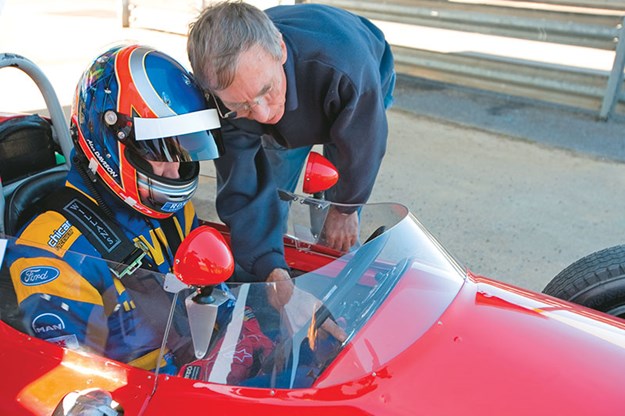
Owner Thallon briefs Davison on the Cooper’s instrumentation, which is rudimentary by V8 Supercar standards but all his grandfather needed
"It’s got a lot of power throughout the range, and it’s beautifully smooth," says Alex. "When you work out its little tricks and get it warm, the gears just slide up and down like a knife through butter. Doing a two-hour grand prix wouldn’t worry me a bit – I could have stayed out there all day. No wonder it won my grandfather over!"
Comparisons with modern machinery are tempting, but Alex doesn’t want to go there. "You can’t even talk about the Cooper and a V8 Supercar in the same sentence," he says. "They are very different vehicles and totally different experiences to drive.
"It’s like talking about whether a driver from one era was better than a current driver. With a V8 Supercar, we spend a lot of time making the power clean and useable at the optimum engine revs, but with the Cooper the power band is much broader.
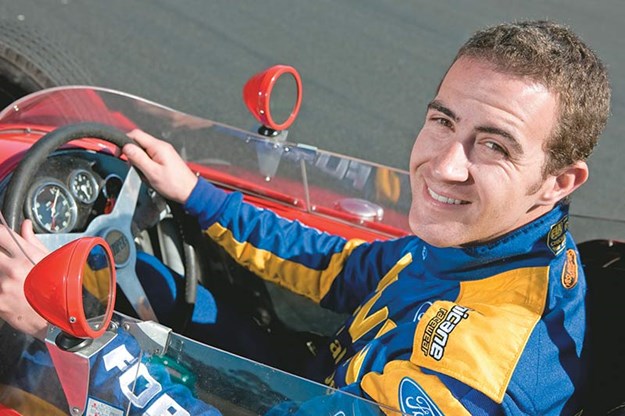
"Racing wasn’t easier or harder, then and now. It’s just a different challenge. Back then, no matter how hard you pushed, you had to look after the car, as reliability was a factor. Now, cars are more robust and they can be driven at 100 percent, so keeping up your fitness and concentration are the real challenges."
How would his grandfather have adapted to 21st century racing?
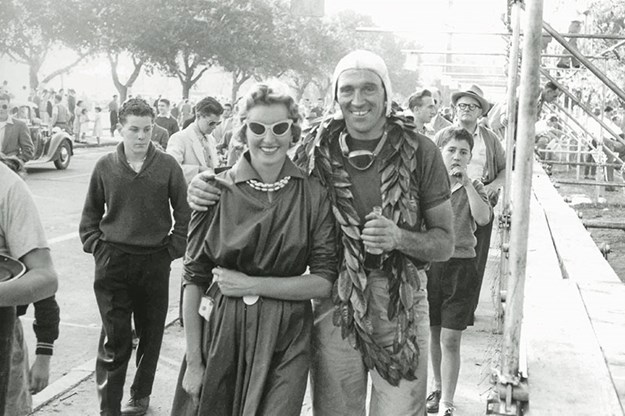
Lex Davison celebrates after winning the 1961 Australian Grand Prix in this very car. Forty eight years later his grandson Alex finds out why the Cooper was a world beater
Four family
Lex Davison always raced with the number ‘4’ and it was on the T51 Cooper when he won his fourth AGP at Mallala in 1961.
When Alex Davison moved to Stone Brothers Racing for 2009, he was assigned the #4 Irwin Racing FG Falcon. Those with an eye for history thought it was in honour of his grandfather but, no, it was just a coincidence.
1959 Formula 2 Cooper T51 Climax specs
Chassis/bodywork: Tubular-steel frame/aluminium (all Cooper alloy bodies, oil and fuel tanks were made by the same father and son team at the rate of 20-25 a year)
Engine: 2.2-litre, four-cylinder, single-overhead camshaft, naturally aspirated via 2 x 50 DCO3 Weber carburettors
Power: 135kW at 6000rpm
Transmission: Citroen-based ERSA four-speed, ‘dog’ box (no synchromesh).
Tyres: 5.00-15 Dunlop Racing
Suspension: Transverse leaf spring with (Triumph Herald) uprights and Armstrong shock absorbers
Brakes: Lockheed-Girling discs (f & r)Performance: 0-400 metres -- 12.74 sec.
From Unique Cars #304, Oct/Nov 2009
Unique Cars magazine Value Guides
Sell your car for free right here
Get your monthly fix of news, reviews and stories on the greatest cars and minds in the automotive world.
Subscribe

.jpg)







